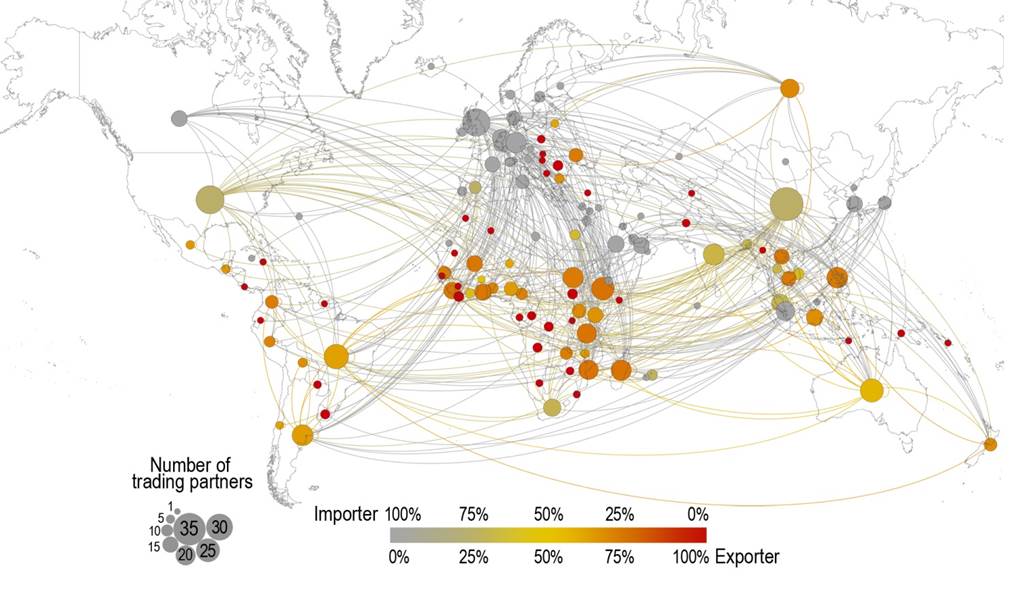kimnicholas | Nearly two out of three countries in the world today
participate in a new kind of “virtual land trade,” where not only the
goods produced but land ownership itself is traded internationally. This
was the finding of our new study, published 7 November 2014.
This phenomenon of large-scale global land acquisitions, sometimes called “land grabbing,” is receiving increasing international attention because of its potential to contribute to development and raise yields in developing countries, but amidst concerns about local land rights and livelihoods.
This phenomenon of large-scale global land acquisitions, sometimes called “land grabbing,” is receiving increasing international attention because of its potential to contribute to development and raise yields in developing countries, but amidst concerns about local land rights and livelihoods.
We found that the land trading network is dominated by a
few key players with many trading partners- led by China, which imports
land ownership from 33 countries, closely followed by the UK and the US
(Figure 1).
One-third of countries both import and export land ownership. Of the 80 countries that export land ownership, most export to only a handful of trading partners, with a third having just one import partner. On the other hand, Ethiopia exports land to 21 different countries, and the Philippines and Madagascar both export land to 18 countries.
One-third of countries both import and export land ownership. Of the 80 countries that export land ownership, most export to only a handful of trading partners, with a third having just one import partner. On the other hand, Ethiopia exports land to 21 different countries, and the Philippines and Madagascar both export land to 18 countries.
Geographically,
countries in the global North primarily act as land importers, while
the global South acts primarily as land exporters (Figure 2). There are
four main areas that import land: North America, Western Europe, the
Middle East, and developing economies in Asia. Southeast Asia is also an
exporter of land, along with South America, Eastern Europe, and
especially Africa. Many of the areas exporting land currently have low
agricultural productivity, so have potential to boost yields with
technological improvements. Fist tap Arnach.




0 comments:
Post a Comment